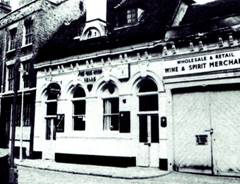
South Australian Medical Heritage Society Inc
Website for the Virtual Museum
Home
Coming meetings
Past meetings
About the Society
Main Galleries
Medicine
Surgery
Anaesthesia
X-rays
Hospitals,other organisations
Individuals of note
Small Galleries
Ethnic medicine
- Aboriginal
- Chinese
- Mediterran
Acknowledgements: This account is based on a reprint of an article by Professor John Ludbrook (Emeritus Professor of Surgery, University of Adelaide) which was published in The American Statistician, May 2005, Vol, 59 No. 2. as “RA Fisher’s Life and Death in Australia , 1959-1962.”.Emeritus Professor J.H.Bennett provided several corrections and advice.
Additional personal in formation was provided by Mr. Brian Smith the Archivist of St. Peter’s Cathedral, Kay Collis, a tour guide, and Professor Donald Simpson. We are also grateful for personal recollections and advice from M. Jirina, M. Polasek and J. Kautsky.
Ronald Aylmer Fisher Kt, ScD, FRS, is regarded by many as the father of modern biostatistics. His numerous publications and several books form the basis of sound mathematical assessment of medical and other experimentation. Modern genetics could not have developed without his contributions.
He made enormous contributions to the design of experiments and invented several tests of significance to analyse them. He stressed the importance of randomization in experimental design and invented randomization (permutation) tests. He put Student’s t-test on a proper footing, and invented analysis of variance (George Snedecor honoured him by naming the test statistic F). Fisher’s name is also attached to the exact test for 2 x 2 tables of frequency.
Fisher was born in London in 1890 as the last of 8 children. He attended Harrow School and in 1909 won a scholarship to Gonville and Caius College, Cambridge University. In 1913 he graduated with distinction in the mathematical tripos. In 1914 he volunteered for, but was rejected by, the army because of his eyesight. He spent the next few years first in a London office and then teaching at various schools. He also worked for a short time in Canada.
In 1919 he joined the Rothamsted Agricultural Experimental Station at Harpenden as their statistician. It was here that he made numerous contributions to statistics and genetics. In 1933, after the retirement of Karl Pearson who was then the Galton Professor of Eugenics at University College, he was appointed to that position. In 1943 he was appointed as the Arthur Balfour Professor of Genetics at Cambridge University. He retired from this Chair in 1957. He became President of Gonville and Caius College in1956.
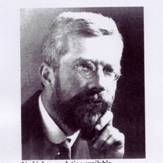
RA Fisher
Photographs and information from: www-dcs.dcs.st-and.ac.uk/-history/Biographies/Fisher.html
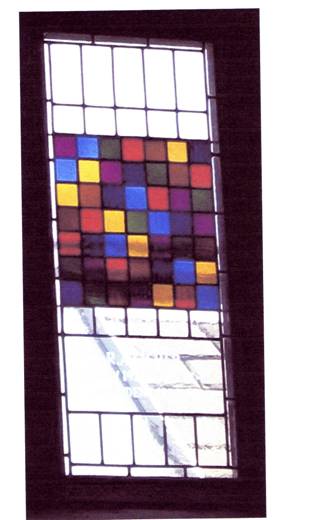
A stained glass window in the Gonville and Caius College dining hall commemorating RA Fisher as president and fellow of the college. The 7x7 colour format refers to a latin square attributed by some to the Swiss mathematician Leonhard Euler.
During his life in England RA Fisher was a precise thinker and on occasions commented critically on the work of others in the field of statistics. Professor Ludbrook in his paper cites differences of opinion with Jerzy Neyman, Karl Pearson and others. He admired Mendel and commented on some of his work. Fisher met and taught many Australians; in particular EA (Alf) Cornish, later Head of the Division of Mathematical Statistics at the CSIRO (Commonwealth Scientific and Industrial Research Organisation) and J Henry Bennett, later Professor of Genetics in the University of Adelaide.
In 1959, Fisher came to Adelaide for a six month visit at Cornish’s invitation as a Senior Research Fellow in CSIRO. During this time he visited the various CSIRO Departments of Mathematical Statistics throughout Australia . Towards the end of this period he decided to settle in Adelaide , resigning his Presidency at Gonville and Caius. His extensive files, correspondence and scientific papers were sent out to him from Cambridge .
For some time he stayed in temporary lodgings, but finally took up residence at St. Mark’s College where he became the President of the Senior Combination Room.
His reputation in Adelaide was one of friendship with adults and admiration from others. One comment from a then young teacher: “He was the sharpest mind I have ever met”. He was exceptionally kind to young people; Donald Simpson remembers that his own small children would go for long and instructive walks with Fisher ,regarding him as the ultimate source of all kinds of wisdom.. Mat Polasek was an Economics tutor at the College and dined with him often. He recalls Fisher as friendly, approachable and with vast general knowledge. He also recalls his failing eyesight.
Whilst in Adelaide Fisher published fifteen papers and completed revised editions of three of his books. Altogether he published over 300 scientific papers .
Fisher attended St. Peters Cathedral regularly and became a good friend of Bishop Reed. In1962 he had surgery for cancer of the colon and died of post-operative complications in the Queen Elizabeth Hospital . Unusually Bishop Reed gave permission for his ashes to be buried under the floor of the cathedral next to a pew named after him. Fisher and Reed himself are the only two accorded this honour.
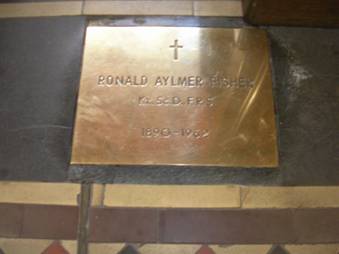 Plaque commemorating RA Fisher, above his ashes on the floor of St. Peters Cathedral, North Adelaide, beside the pew named in his honour.
Plaque commemorating RA Fisher, above his ashes on the floor of St. Peters Cathedral, North Adelaide, beside the pew named in his honour.
 Back of seat of Fisher’s pew
Back of seat of Fisher’s pew
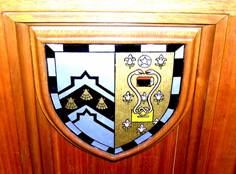 Gonville and Caius crest on the end of Fisher’s pew, row L
Gonville and Caius crest on the end of Fisher’s pew, row L
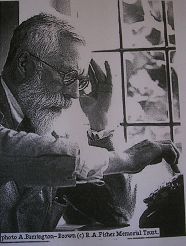
Famous photograph of Fisher and his electromechanical calculator taken in his department at 44 Storey’s Way, Cambridge .
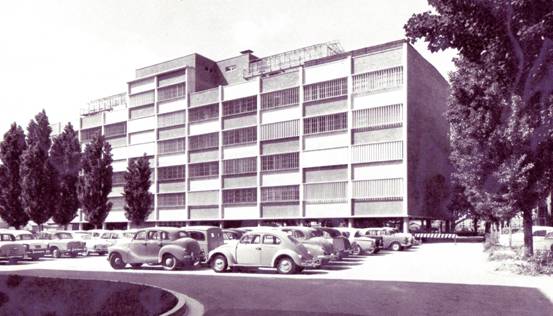 RA Fisher laboratories housing the departments of genetics and zoology at the University of Adelaide. The building was designed and built by Bagot & Co. In 1961. Unfortunately because of asbestos and some structural problems it was demolished in 1998. (photograph kindly provided by Helen Bruce, university archives).
RA Fisher laboratories housing the departments of genetics and zoology at the University of Adelaide. The building was designed and built by Bagot & Co. In 1961. Unfortunately because of asbestos and some structural problems it was demolished in 1998. (photograph kindly provided by Helen Bruce, university archives).
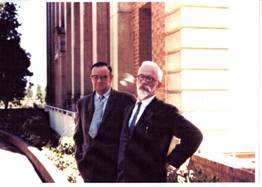
Photograph of RA Fis her and EA (Alf) Cornish. the head of the CSIRO division of mathematical sciences, in front of the CSIRO building near Kintore Ave, Adelaide (kindly provided by Cheryl Hoskin from the Barr Smith special collection library).
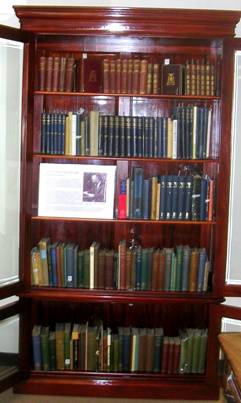
Book case containing the Fisher collection at the “Special Collection Library” in the Barr Smith Library in Adelaide University .
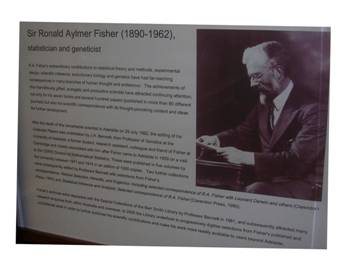
A vignette by Professor Bennett about Fisher appended to the book shelf. (Transcription immediately below).
Sir Ronald Aylmer Fisher (1890-1962)
Statistician and geneticist
RA Fisher’s extraordinary contributions to statistical theory and methods, experimental design, scientific inference, evolutionary biology and genetics have far reaching consequences in many branches of human thought and endeavour. The achievements of this marvelously gifted energetic and productive scientist have attracted continuing attention, not only for his six books and several hundred papers ( published in more than 80different journals but also his scientific correspondence with its thought provoking and content and ideas for further development.
After the death of this remarkable scientist in Adelaide 29 July 1962 the editing of his Collected Papers was undertaken by JH Bennett then Professor of Genetics at the University of Adelaide a former student, research assistant, colleague and friend of Fisher at Cambridge and closely associated with him after Fisher came to Adelaide in 1959 on a visit to the CSIRO Division of Mathematical Statistics. These were published in five volumes by the University between 1971 and 1974 in an edition of 1000 copies. Two further collections were subsequently edited by Professor Bennett with selections from Fisher’s correspondence, Natural Selection, Heredity and Eugenics, including selected correspondence of RA Fisher with Leonard Darwin and others, (Clarendon Press 1983) and Statistical Inference and Analysis, Selected correspondence of RA Fis her (Clarendon Press 1990).
Fisher's archives were deposited with the Special Collections of the Barr-Smith Library by Professor Bennett in 1981 and subsequently attracted many research inquiries from within Australia and overseas. In 2000 the Library undertook to progressively digitise selections from Fisher’s published and unpublished work in order to further publicise his scientific contributions and make his work more readily available to users beyond Australia .
RA Fisher and genetics
When he was a professor of genetics in Cambridge, RA Fisher’s Department was situated at 44 Storey’s Way a house noted for its gardens. After lectures Fisher often retired with some of his students to The Bun Shop a local pub for further discussion. He published over 70 papers directly related to genetics. The last five of these were published while he was in Adelaide (1961 and 1962) His important book, The Genetical Theory of Natural Selection, was first published by the Clarendon Press in 1930, revised in1958 and further annotated and edited by Henry Bennett in 1999.
Other papers and lectures on genetics involve topics such as Mendelian Characteristics, Darwinian Evolution by Mutations, The Dominance Ratio, Polymorphism, Natural Selection and Polysomic Inheritance.
His signal contribution related to medicine, which showed the power of his analytical thought, was the unraveling of the Rhesus blood group system in 1943. Some of his thoughts were jotted down in the Bun Shop.
Fisher’s jottings on the three interlocked rhesus loci c, d, and e, written in the Bun Shop. Because of his poor eyesight, he failed to note the beer spilled on the table which affected the lower left hand corner of his notes.
The Bun Shop, where Fisher met with his students and friends. It no longer exists but has been re-located as a restaurant in King Street .
The above pictures and comments have been provided by internet articles mentioned in:
-o0o-
